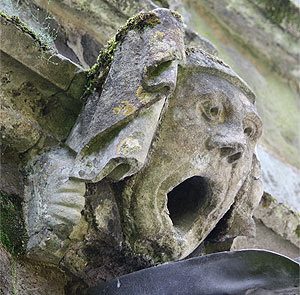As we might expect in a country with such deep Catholic roots, the Italian equivalent of the English saying “The clothes don’t make the man” is “The habit does not make the monk.” (L’abito non fa il monaco.) I was reminded of this very Italian saying by an article we were tipped on to by reader JS, concerning the debates within the Orthodox Church in Greece on clerical dress; specifically, on whether the regulations should be changed that require the clergy to wear the “rason”, the Greek equivalent of the cassock, as their normal dress all the time.
An Orthodox blog called Mystagogy, translating an article from a Greek website, reports that a small number of Greek bishops have expressed an openness to relaxing the rule; among them, Metropolitan Theoklitos of Ioannina, who is reported as saying:
No one will be surprised to read that Their Eminences are very much of the minority opinion among the Greek clergy, and that a recent meeting of the Orthodox Clergy Association of Greece reasserted
An Orthodox blog called Mystagogy, translating an article from a Greek website, reports that a small number of Greek bishops have expressed an openness to relaxing the rule; among them, Metropolitan Theoklitos of Ioannina, who is reported as saying:
“The cassock is to blame for young girls not marrying priests, or perhaps all of us (are), because we do not allow a priest to take his wife by the arm and go for a stroll. Herein is the problem of pietism which results from mixing with Protestantism. We have falsely made the priest a saint and not allowed God to make him a saint.”Another Metropolitan, Anthimos of Alexandroupolis, has said even more broadly that the current discipline on clerical attire is one of the things that will condemn the Byzantine tradition to become relics for a museum if it refuses to be brought up to date. (If I understand correctly, His Eminence appears to be in favor of simplifying liturgical garments as well, not likely to make him the most popular fellow at the next synod.)
No one will be surprised to read that Their Eminences are very much of the minority opinion among the Greek clergy, and that a recent meeting of the Orthodox Clergy Association of Greece reasserted
“with the absolute majority … that the outer appearance of the clergy should remain as is, without modification, without simplification, without the abolition of the sacred cassock…”.This view is supported also by the majority of the bishops, according to the same article, which quotes Metropolitan Hierotheos of Nafpaktos:
“(The cassock) has a history connected with sacrifices, struggles, tears and blood. … To clergy the cassock reminds them that they are spiritual physicians and not just social workers. The life of the cleric is sacrificial, an ongoing offering that requires the coming out of one’s self to offer himself to others. This is connected with the struggles, the sacrifices, the patience in slanders and the criticisms of the people. Ultimately I believe that the cassock does not make the work of the clergy more difficult, but rather it is the high mission of the Priesthood that is difficult.”He follows with some words of wisdom which might have been perhaps more generally heeded when the Roman Catholic Church went through this same debate (though rather more rapidly) in the 1960s.
“The Church moves slowly with changes as is the same in every culture, so as not to simultaneously eliminate the deeper aspects of its tradition. Any change should be handled with care to ensure the essence of ecclesiastical life. The Church should not easily alter to any new thing, because there lurks the danger of alienation.”









.jpg)

































































